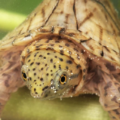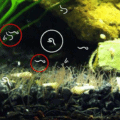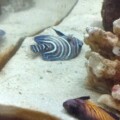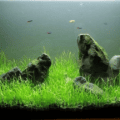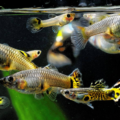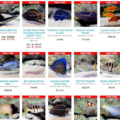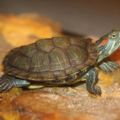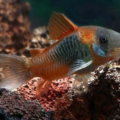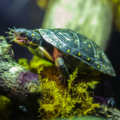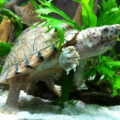Distinguish between a False Map Turtle and Common Map Turtle like an expert, learn maintenance tips from this detailed care guide to enhance your pet turtle’s life.
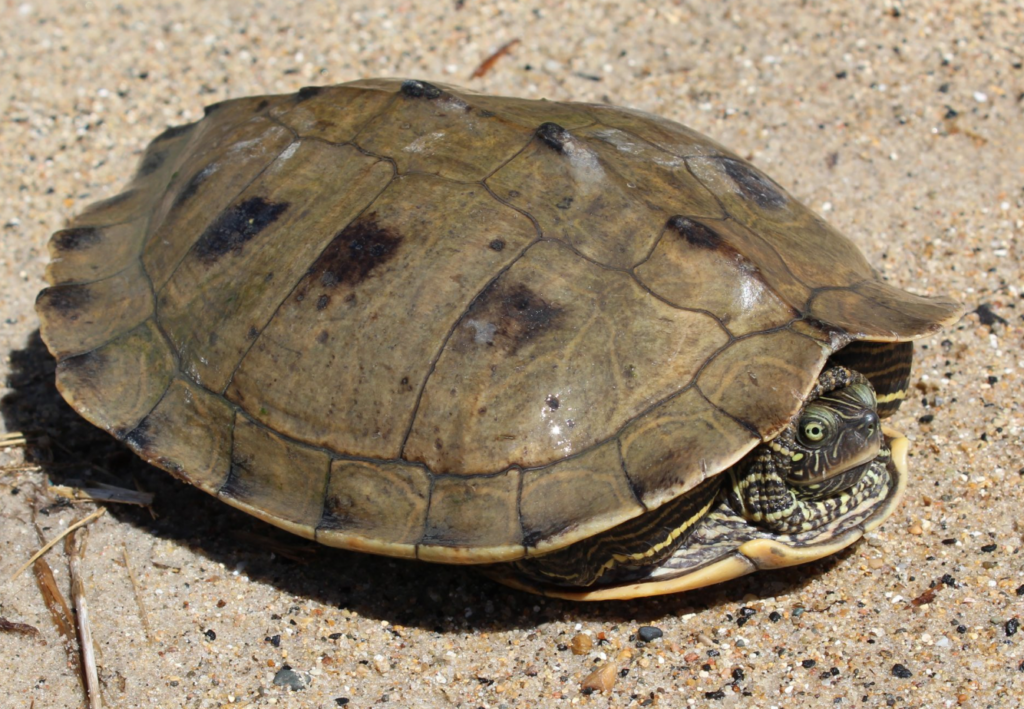
Introduction
If you’re interested in exploring various water-dwellers beyond the typical fish species, this freshwater turtle species guide is a great starting point.
You’re spoiled for choice, considering the wide range of semi-aquatic pets, but if you want an active species with a striking appearance, choose the False Map Turtle (Graptemys pseudogeographica). Because of its unique care requirements, this species is best for expert aquarists. However, if you welcome challenges, False Map Turtle care is simple to understand.
You’ll need to follow specific Graptemys pseudogeographica habitat and lifestyle needs provided in this guide. So, get your writing pad ready and take notes.
Author’s Note: Check out our post The 14 Types of Freshwater Turtles for even more great semi-aquatic pets!
Creating the Ideal Habitat for a False Map Turtle
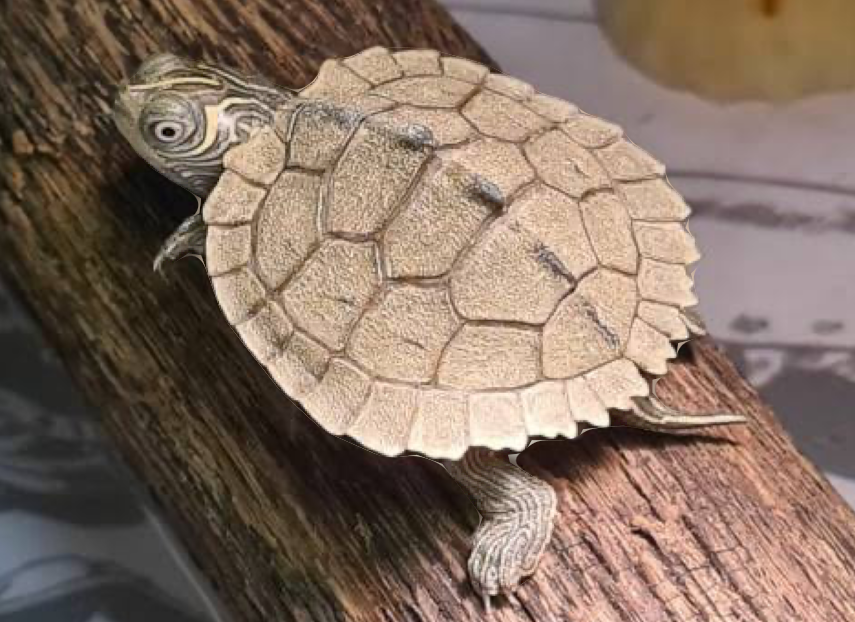
Our goal is to build the best tank setup for False Map Turtles for their optimal comfort and your viewing pleasure.
Tank Size & Water Depth
A 75+ gallon tank for adult False Map Turtles is perfect since they grow between 3.5 and 25 inches, depending on their sex. However, keep in mind the tank’s depth should be at least 2x their shell length to encourage natural swimming behavior.
Filtration & Water Flow
False Map Turtles are strong swimmers and messy eaters that produce alot of waste, so provide a moderate to heavy current simulation with a strong filtration system for keeping their water clean.
For the best result, use a single or double-canister filter. Checkout our post on the 7 Best Filters for Your Turtle Tank & its Gallon Capacity for an in-depth guide on the best turtle tank filtration system.
Other parameters to follow include:
| Temperature | 72 – 78℉ |
| pH Level | 7.4 – 8 |
| Hardness | 180 – 200ppm |
Basking & Lighting
The ideal habitat for Graptemys pseudogeographica balances water and land to suit its semi-aquatic lifestyle. It needs heated basking areas made of stable platforms and UVB light sources to strengthen its shells and regulate its body temperatures.
For a more in-depth guide on choosing the right heat and light combo checkout our post on The Best Heat Lamps and UVB Lights For Turtle Tanks.
Substrate & Tank Décor
We will complete this freshwater turtle aquarium setup with appropriate decor and substrate so that it can live safely.
It’s best to use smooth rock formations, driftwood, and aquatic plants like Amazon Sword, Duckweed, and Java Fern. The plants provide an enriching environment and food source, especially for adult False Map Turtles.
Understanding False Map Turtle Behavior & Personality
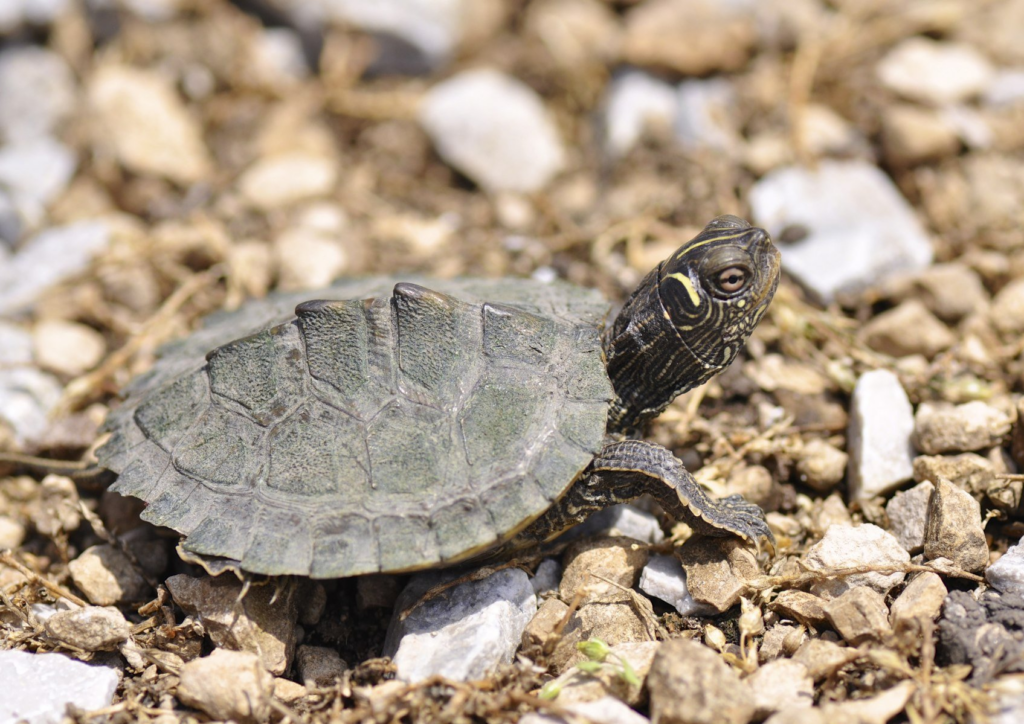
You’ve heard that False Map Turtles are active swimmers, but did you know about their social tendencies and interaction with their environment? Here’s a closer look at some False Map Turtle personality traits you should know before owning one as a pet.
Activity Levels
As strong swimmers, Graptemys pseudogeographica require ample space for movement. Decorate the tank to leave open swimming areas for them to explore their environment. Also be sure to keep your turtle stimulated in an aquascaped environment and consider some of the 8 Best Toys for Pet Turtles to Play With which will keep you both entertained!
Basking & Resting Habits
Encourage basking behavior in freshwater turtles by providing a strong platform made of wood, rocks, or steel, depending on your tank’s theme. It should have a comfortable ramp for movement from the water to the basking area and a wide peak for resting.
The goal should be to bring the temperature of the basking area between 90 and 95 °F. For a more in-depth guide on choosing the right heat and UVB lighting combo checkout our post below,
Despite being active swimming turtles, Graptemys pseudogeographica doesn’t always play well with others except under certain conditions.
They thrive in groups of other Map Turtles, all-females, or specific larger fish. To reduce the risk of territoriality, you can also add dividers or separate basking areas.
Exploring the Different Types of Map Turtles
Identifying Graptemys species as a beginner can be confusing since they have similar features, but you must understand that each Map Turtle species is unique and different from the False Map Turtle.
Mississippi Map Turtle (Graptemys pseudogeographica kohnii)
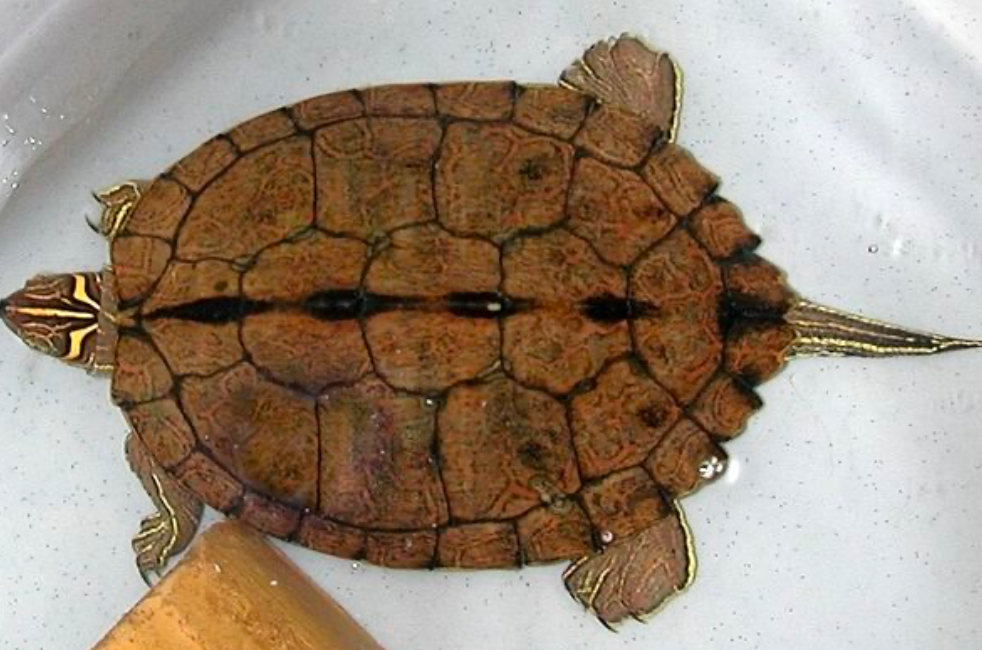
When comparing False Map Turtle vs Mississippi Map Turtle, look at their physical features and personalities.
The Mississippi Map Turtle is a subspecies of the False Map Turtle with a smaller appearance and docile nature that makes it more social than the regular pseudogeographica turtle.
Northern Map Turtle (Graptemys geographica)
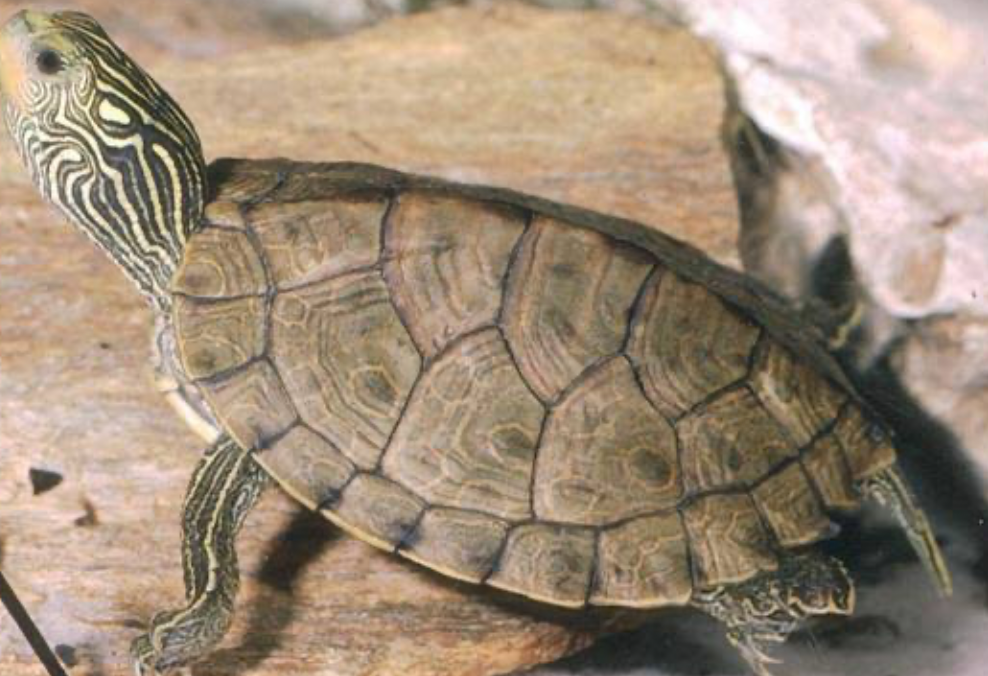
Northern Map Turtle is the most common species of the Graptemys genus. It has a slightly larger body and thrives in stronger water currents than the False Map Turtle.
Black-Knobbed Map Turtle (Graptemys nigrinoda)
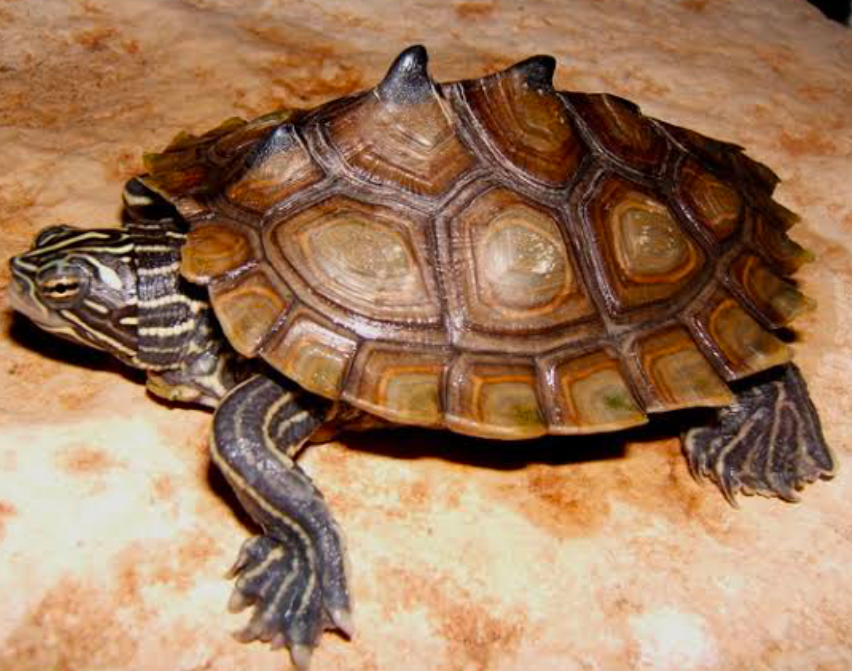
You’ll recognize this species by its dark shell knobs and unique ridge patterns on the center of its keel.
Now, you can choose a tank mate from any of the different types of Map Turtles that you know.
Choosing the Best Tank Mates for a False Map Turtle
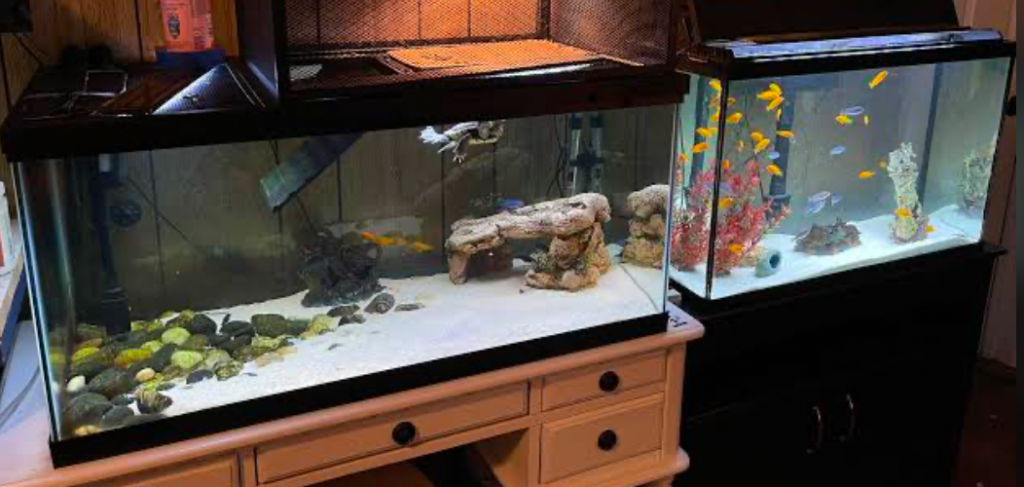
We’ll distinguish between compatible fish for Graptemys pseudogeographica and tankmates to avoid allowing you to build a harmonious aquatic environment.
Best Companions
The best tank mates for False Map Turtles are large, fast-moving fish like large Cichlids with caution or other similarly sized turtles like Musk and Mud Turtles.
Species to Avoid
Always avoid slow-moving fish, small turtles, and aggressive tank mates that may either become food for your Map Turtles or stress them.
Solo vs. Group Housing
Unlike other turtle species, False Map Turtles may tolerate company because of their social nature, but they’ll require ample space to live comfortably with others. Use these multiple turtle cohabitation tips to maintain peace in your tank
- Use a large tank of at least 75 gallons per pair of Map Turtles
- Create separate basking spots
- Use dividers to mark territories
Feeding the False Map Turtle: A Balanced & Nutritious Diet
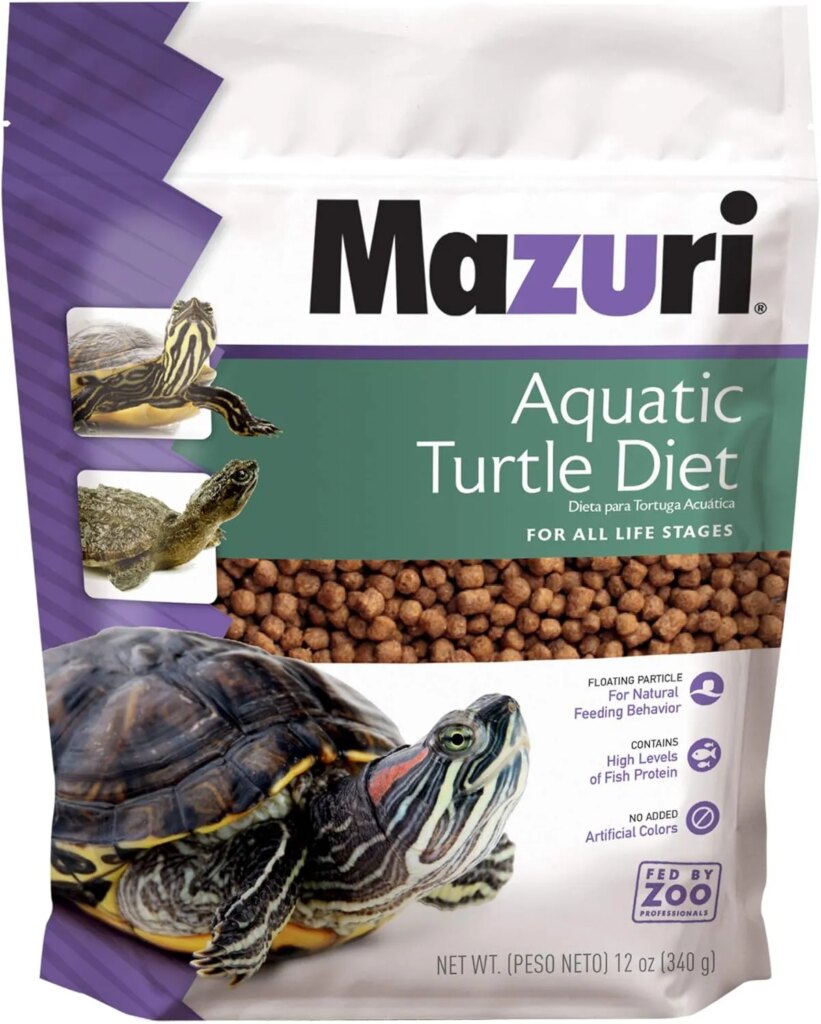
Found On Amazon
Preparing a False Map Turtle diet plan is one of the simpler parts of their maintenance since they’re omnivores.
However, you must make adjustments from animal-based to plant-based as they mature while balancing a variety of foods for proper growth and shell health.
Dietary Needs
In their early years, Map Turtles prefer high-protein foods but need some plant matter to boost their immunity. As they mature, they’ll gravitate towards plant meals over animal-based foods.
Best Foods
Here’s how to provide the best food for Graptemys pseudogeographica:
- Feed them a mix of omnivorous foods, from snails to worms and small fish, to encourage their hunting habits.
- Leafy greens for good gut health, and
- commercial turtle pellets as a staple.
Author’s Note: Check out our Complete Guide To Turtle Food: What To Feed And Why It Matters for detailed food recommendations!
Feeding Schedule
When feeding freshwater turtles in captivity, consider their age. Juveniles need to eat daily, while adults should only eat 3 – 4 times weekly.
Breeding False Map Turtles: What to Know About Reproduction
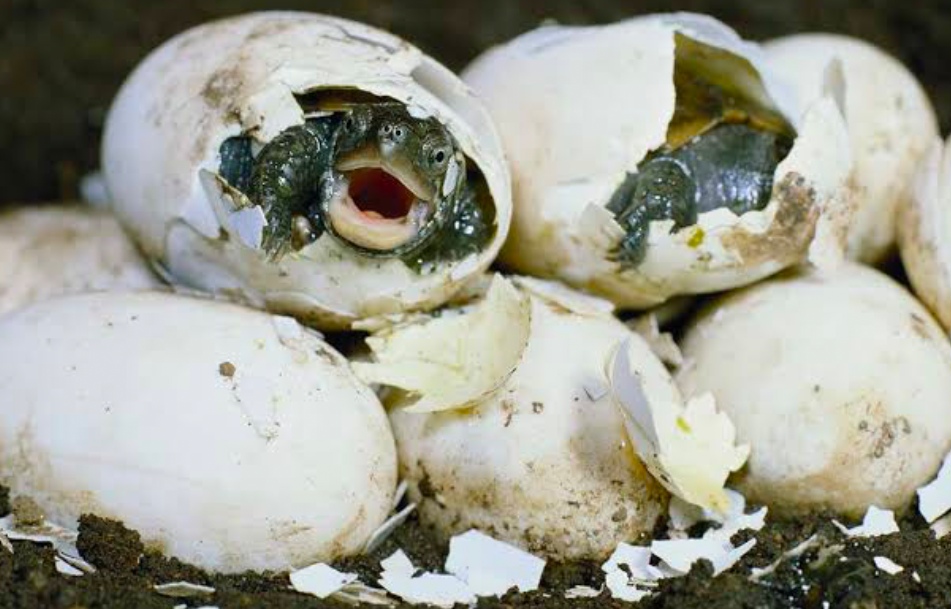
Are you interested in breeding False Map Turtles in captivity? Then, let’s discuss their breeding behaviors, nesting requirements, and hatchling care.
Mating Behavior
Choose a male and female False Map Turtle that is at least 4 to 6 years old for breeding, then watch their courtship behavior. The male caresses the female’s face with its front claws, and if she accepts, mating will occur underwater.
Nesting & Egg Incubation
Provide a nesting box with at least 12 inches of damp sandy soil for the female False Map Turtle to lay her eggs. If she’s uncomfortable, she’ll become egg-bound, so don’t mess up.
Also note your turtle egg incubation methods, such as the placement and temperature range. Set a neutral temperature for male and female hatchlings, warmer temperatures for only females, and cooler temperatures for only males.
Hatchling Care
Hatchling False Map Turtle care is twofold – diet and environment.
Provide a clean environment with the right temperatures, as provided above, for your juvenile turtles. Make daily water changes to keep the water pristine, and feed them carnivorous food like crushed turtle hatchling pellets and baby brine shrimp.
Common Health Issues & How to Prevent Them in False Map Turtles
False Map Turtle health problems, such as Shell Rot, Respiratory Infections, Parasites, and Nutritional problems, are effects of poor maintenance.
Follow this comprehensive guide for aquatic turtle disease prevention and note these symptoms so you can treat your pets properly.
Shell Rot & Fungus
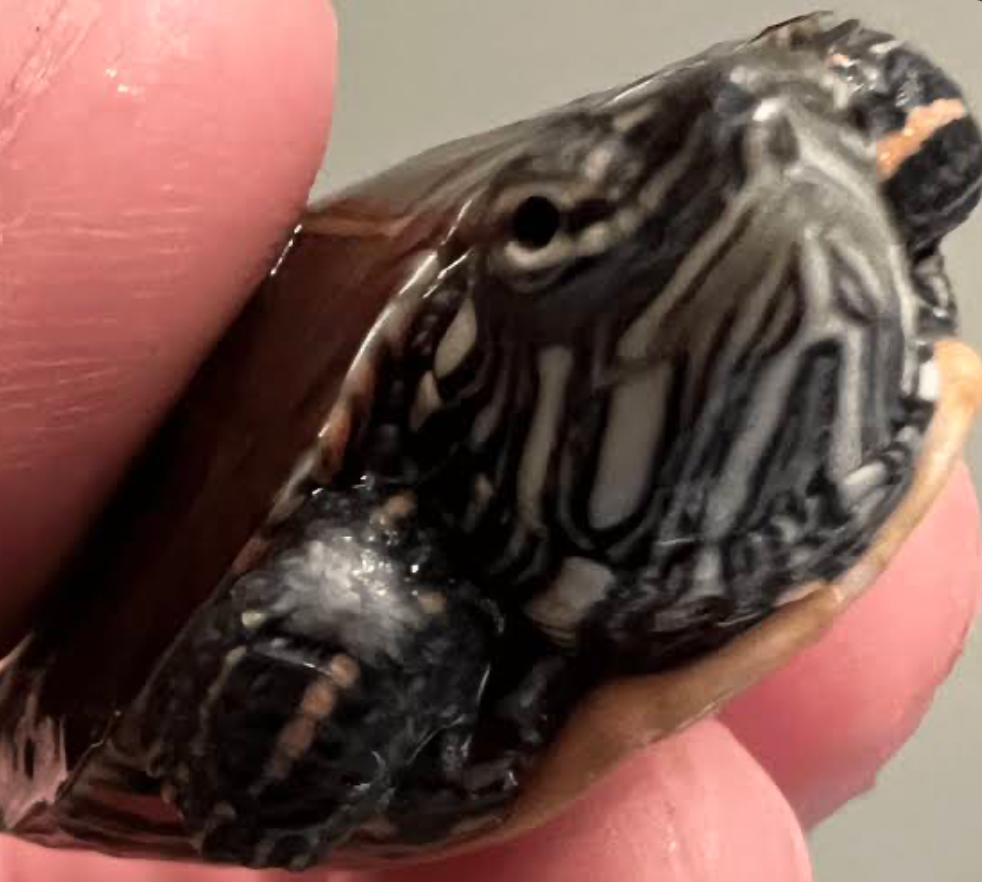
Poor water quality causes common shell infections, such as rotting, fungus, and cracks. Immediately isolate your pet, improve the water quality, and apply healing creams to the affected areas.
Respiratory Infections
Low temperatures and dirty water encourage bacteria that cause respiratory problems and other infections like colds and difficulty breathing.
Parasites & Nutritional Deficiencies
Preventing turtle shell infections depends on how well you maintain your False Map Turtles and observe them for signs of discomfort. Always isolate affected turtles before administering treatments. Then, improve the environment and their diets for immediate results, but if the symptoms persist, visit a vet for further diagnosis.
Lifespan & Long-Term Care: Ensuring a Healthy False Map Turtle
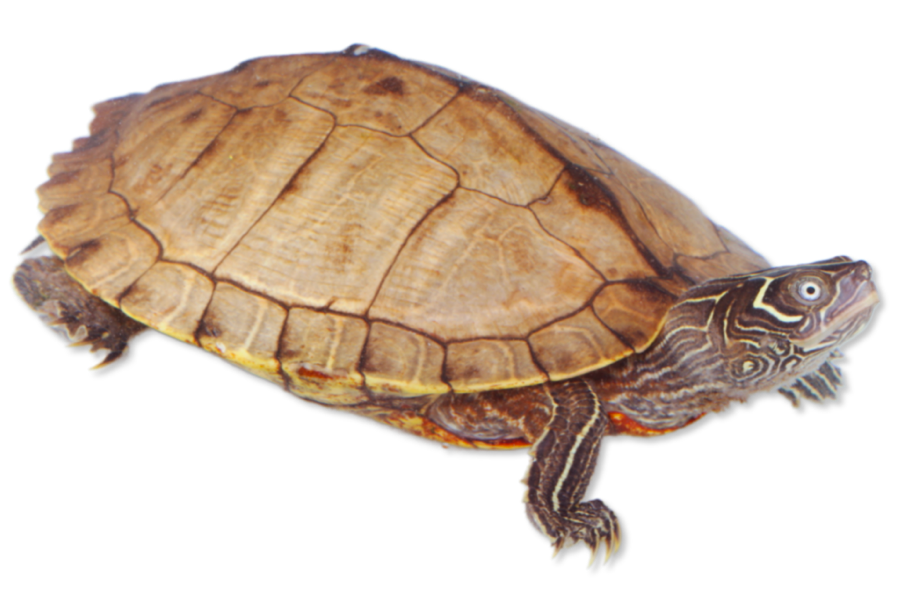
False Map Turtles can live up to 30 years if you follow this long-term turtle care guide. That’s why keeping this species is a long-term commitment and not a quick hobby you’ll move on from in a year.
Here’s how you can maximize your False Map Turtle lifespan.
Tank Size Adjustments
Increase the tank size as your pet grows larger, or you add new members to the community. Remember, they need space to swim and feel safe.
Dietary Changes with Age
Feed them based on their age – carnivorous diet for juveniles and omnivorous meals for adults. Scroll up for details.
Routine Health Monitoring
Keeping Map Turtles healthy for decades depends on how well you monitor their shell condition, behavior, and basking activity to ensure optimal health.
Conclusion
Now you know why owning a False Map Turtle is better for experts than beginners. There’s so much involved in maintaining their energetic nature, striking map-like shell patterns, and keeping them healthy.
If you’re up to the task, this responsible False Map Turtle care guide contains recommendations on tank size, diet, and long-term care to maximize their lifespan.
You shouldn’t miss out on experiencing one of the best freshwater turtles for aquariums because you’re a beginner. However, your heart must be in it. You can ask questions in the comment box below.

